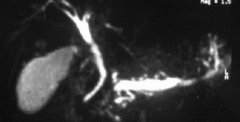读医学网
2013年美国癌症协会肺癌筛查指南
发布时间:2014-05-20 09:25 类别:呼吸系统疾病 标签:national Cancer Institute director 来源:丁香园
In the 20th century, the world population began to experience rising mortality from lung cancer caused by chronic exposure to tobacco smoke. This epidemic of lung cancer deaths is now receding in some nations where tobacco control has reduced smoking, but it is rapidly rising in others.Since the first Surgeon General’s report, there has been a concerted effort to reduce the uptake of cigarette smoking and to help smokers to quit, and to determine if screening could reduce the burden of disease among those at high risk of lung cancer due to prolonged cigarette smoking. On November 4, 2010, the director of the National Cancer Institute (NCI) announced that an ongoing evaluation of the National Lung Screening Trial (NLST) data had shown a statistically significant 20% reduction in lung cancer mortality in a group of adults at high risk of lung cancer who were randomized to receive 3 consecutive annual lung cancer screening examinations (at baseline, year 1, and year 2) with low-dose computed tomography (LDCT) compared with an equivalent-risk group of adults randomized to receive consecutive annual chest x-rays (CXR). An equally important onclusion in the announcement was the conclusion of the NLST’s Data Safety and Monitoring Board that ‘‘there was no evidence of unforeseen screening effects that warranted acting contrary to the trial’s pre-specified monitoring plan. On June 30, 2011, the initial study results of the NLST were published, providing the first evidence from a prospective randomized controlled trial (RCT) that lung cancer screening in a high-risk population was effective in reducing lung cancer deaths.
The purpose of this guideline is to provide clinicians and the public with guidance about screening for lung cancer, and specifically to address: 1) who is and who is not a candidate for lung cancer screening; 2) what is known about the benefits, limitations, and harms associated with lung cancer screening; 3) the importance and key elements of informed and shared decision-making prior to making a decision to undergo lung cancer screening; and (4) specific recommendations about the screening process and the importance of smoking cessation for current smokers.
- 猜你会喜欢....





